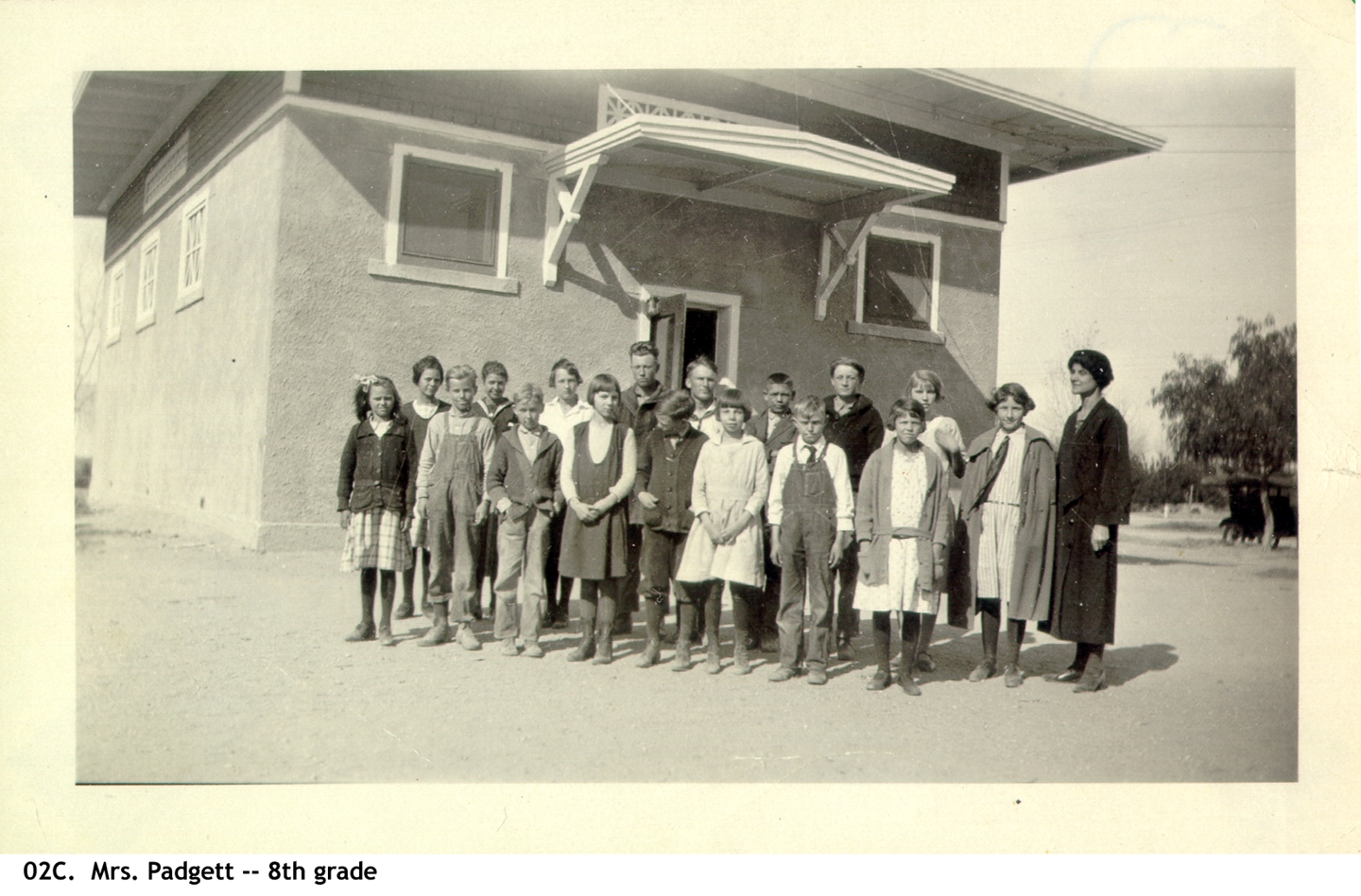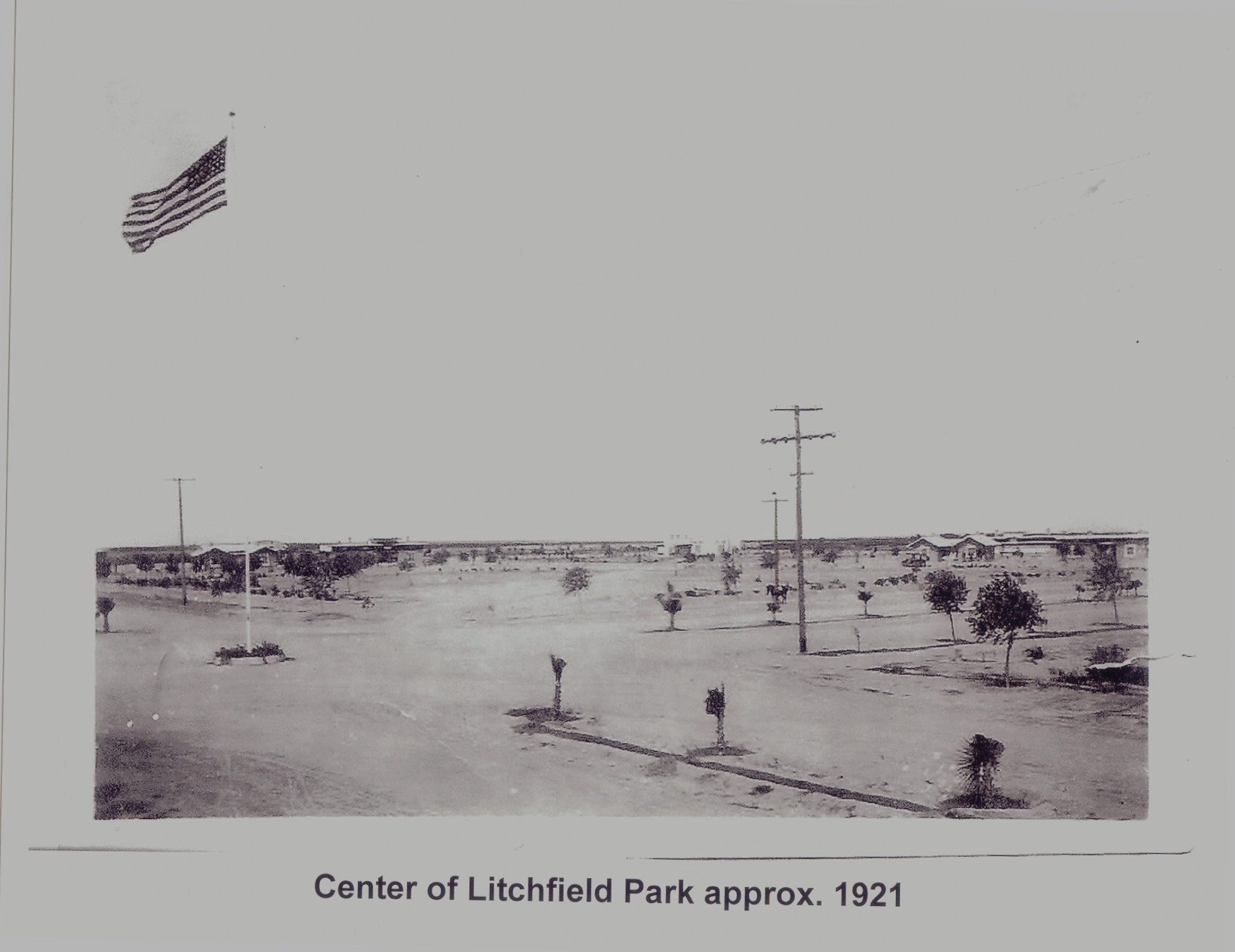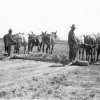The Development of Litchfield Park, AZ
The Development of Litchfield Park, AZ
The Southwest Cotton Company, a subsidiary of Goodyear Tire & Rubber Company, purchased land to plant cotton for their pneumatic tire cord in the area now known as Litchfield Park, Arizona. The cotton was planted in 1917 and by 1918 the downtown area of Litchfield Park was developed. Try to visualize Litchfield Park in 1918, when the town site was under development!
In 1918 Mr. Paul W. Litchfield and famous Phoenix Architect L. G. Knipe designed and planned the city’s layout. The main street developed running north/south was named Litchfield Road and the one east/west was Agua Fria Street, now known as Wigwam Boulevard. City blocks were zoned for business, residences and recreation. Residences were north of the business zone and the east side was for recreation. The first permanent houses were frame buildings on the west side of the business district and stucco houses were built on the east side on a circular street called Plaza Drive.
This is the time that extensive landscaping of the entire town began. Trees and shrubs were set out to provide shade and beauty and two rows of palm trees were set out along the main streets. Sidewalks and streets were added in 1919, but were not paved until 1935. The streets were graded with a border in the center. This layout was the beginning of a lifestyle that has continued through generations.
In 1918, the first general store was built on the corner of Litchfield Road and Agua Fria Street. A restaurant, pool hall and a  barbershop were also built along side of the general store. The Wigwam, as we know it today, was called The Organizational House and was built for the Goodyear executives to come and visit the farms. The Litchfield School started in a temporary building in the back of a cook shack. In 1918, a bond election provided money to build four one-room Adobe classrooms at the present location of Litchfield Elementary School. The Litchfield Elementary School District #79 was started at this time. The St. Thomas Aquinas Mission Church was built on the corner of the School grounds in 1918-1919. The Flagpole in the center of downtown was established when the business center was first developed.
barbershop were also built along side of the general store. The Wigwam, as we know it today, was called The Organizational House and was built for the Goodyear executives to come and visit the farms. The Litchfield School started in a temporary building in the back of a cook shack. In 1918, a bond election provided money to build four one-room Adobe classrooms at the present location of Litchfield Elementary School. The Litchfield Elementary School District #79 was started at this time. The St. Thomas Aquinas Mission Church was built on the corner of the School grounds in 1918-1919. The Flagpole in the center of downtown was established when the business center was first developed.
The permanent town site included a complete water and sewage system. In 1918, water mains were laid out to all parts of the town and a 325,000 gallon reservoir was built on the hill at La Loma and completed in 1921. This water was used for domestic use and a modern sewage system was installed throughout the town.
The downtown business section grew very slowly. The first business was an original company store that had groceries, general merchandise and drugs. It was all destroyed by fire in 1918 and was rebuilt in 1920 as a larger store with a postal service. A hospital was built in 1918 because of the Spanish Flu pandemic that killed one in ten Arizonians. The Goodyear Farms cemetery was started as the Flu epidemic grew.
Current day Litchfield Park was planned in 1918, and has grown some since then, but remains a unique area that has lasted almost a century.





